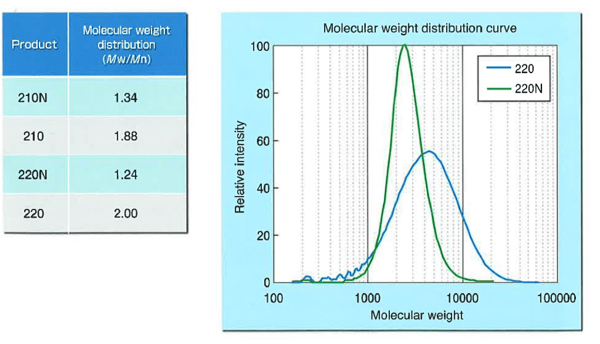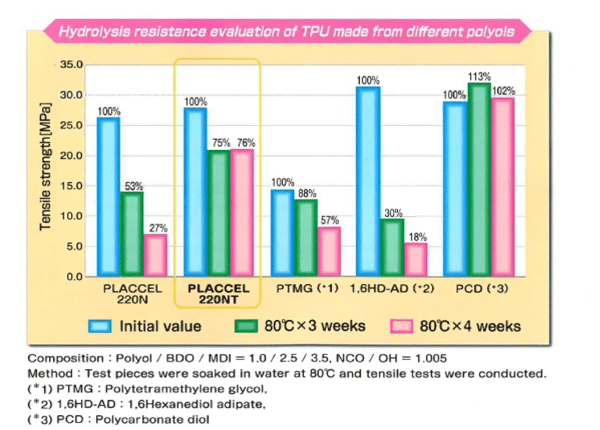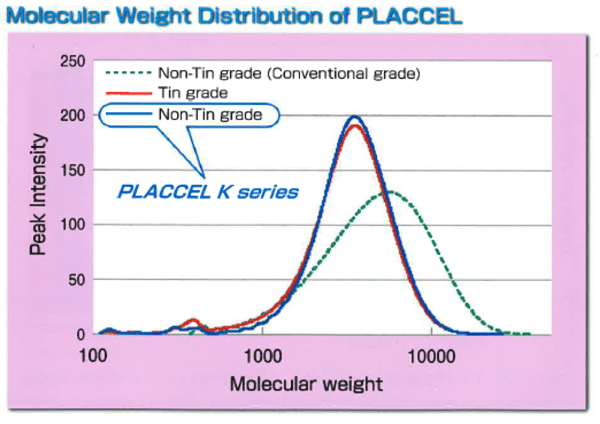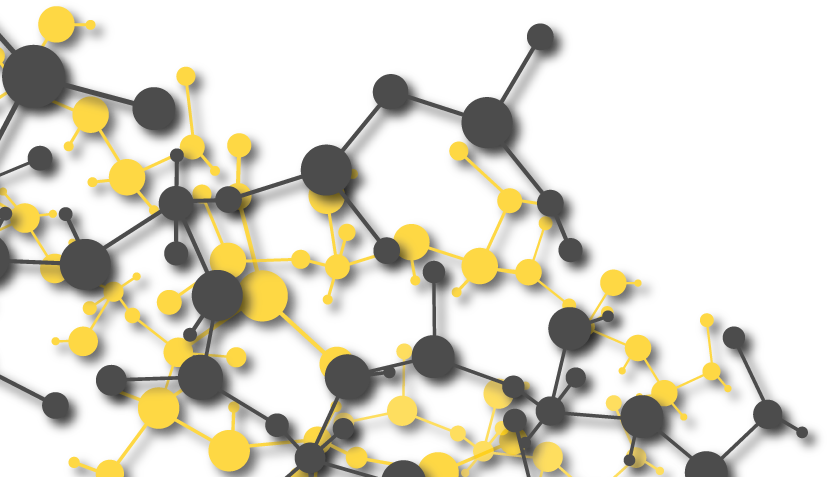Using the broad range of unique polycaprolactone polyols available from Gantrade and Daicel Corporation, formulators can custom-tailor polyurethanes to achieve greater levels of performance. Polycaprolactone polyols in polyurethanes can enhance the capabilities of existing polyurethanes or enter new applications by displacing other material systems, such as rubber and epoxies.
Polyurethanes are not just engineered to optimize a single performance parameter. Instead, formulators must simultaneously address multiple parameters that can include flexibility, durability, and the maintenance of properties at high and low temperatures; hydrolysis, chemical, oil & solvent resistance; toughness, abrasion & cut-chip resistance; UV & oxidation resistance; and a long service life. We have designed our various polycaprolactone polyol grades to allow formulators to maximize a wide cross-section of these parameters within a single polyurethane formulation.
Today, we will delineate the breadth of our polycaprolactone polyols through a succession of tables that list-out our diols (200 series), triols (300 series), tetraol (400 series), and numerous specialty grade series.
Manufacturers use polycaprolactone-based, high-performance polyurethanes in applications that include cast elastomer parts, coatings, adhesives, foam, laminated packaging, TPUs, leather and textile coatings, gravure ink binders, and dispersions. Caprolactone polyols are particularly beneficial for urethane formations used in corrosion protection and water-immersion applications, since unlike polyethers, they exhibit low water absorption. End-use industries include automotive, industrial, construction, mining, oil & gas, healthcare, sporting goods, municipal water treatment, electrical/electronics, textiles, and footwear to name a few.
What Makes Polycaprolactones Unique in Polyurethanes?
Polycaprolactone polyols comprise a special class of aliphatic polyester polyols, used as the soft block segment of high-performance polyurethane elastomers. We can produce polycaprolactone polyols with very low acid values (increasing hydrolytic stability); perfect end-termination functionality (excellent reactivity and high molecular weights); narrow molecular weight distributions (low viscosity including in the prepolymer form), and using a wide variety of initiator molecules that allow the design of customized features.
Standard adipate polyols arise from the condensation reaction of a diol with a diacid such as adipic acid. This results in side-reactions and residual acidic moieties that promote hydrolysis. The polycaprolactone polyols are created by a Ring-Opening Polymerization process (ROP) under mild-conditions without the involvement of acidic moieties, as depicted in the chemistry below.
For a greater description of the ROP Process, see https://www.gantrade.com/blog/caprolactone-monomer-a-gateway-building-block-for-advanced-performance-intermediates.

Further, the linear, symmetrical polycaprolactones repeat structural unit produces soft blocks with very high intermolecular chain-packing forces and efficient phase separation from the hard block urethane segments. This enhances flexibility, toughness, and elastomeric characteristics.
These structural features of the polycaprolactone polyols, and the even-numbered carbon spacing, are responsible for performance levels and durability that surpasses that of adipate-based polyester polyurethanes,
We have listed below just a few of the “initiator” diols (R-[-OH]f]) that formulators use and the key characteristics of the resulting polycaprolactone polyols in a polyurethane elastomer.
o Ethylene Glycol: General purpose initiator affording a good balance of properties
o Diethylene Glycol: Contributes some polyether performance characteristics and liquid diols
o Butanediol: High cut, tear and chunk resistance, high tensile properties
o Hexanediol: High tensile and thermal properties and cut-chip resistance
o Neopentyl Glycol: Reduced propensity to crystallize and better hydrolytic stability
o Polycarbonate Diol: Reduced moisture absorption and enhanced hydrolytic stability
Achieving Key Polyurethane Enhancements Using Gantrade’s Polycaprolactone Polyols
Polyurethane formulators achieve a variety of key performance enhancements with our polycaprolactone polyols. These following molecular features of the polycaprolactone polyols manifest in polyurethanes characterized by the following property profiles, many of which are best-in-class performance attributes.
- Superior resistance to hydrolysis
- Excellent weatherability and UV stability
- High temperature performance
- Good low temperature properties & flexibility affording a broad service temperature profile
- Flex-fatigue life and elastic memory
- Compression set resistance
- Enhanced abrasion and impact resistance
- Chemical resistance to oils, fuels, & solvents
- Cut, chip, and tear strength
- Processing advantages
- Prepolymer viscosity stability
- Excellent service life when compared with PURs based on other polyols
Placcel® Polycaprolactone Polyol Series
The broad portfolio of Daicel’s Placcel® polycaprolactone polyols include polycaprolactone diols with molecular weights from 530 to 4000, initiated with various glycols to achieve a variety of property enhancements; polycaprolactone triols terminated with three primary hydroxyl moieties and molecular weights of 310 to 2000; and a liquid polycaprolactone tetraol with a molecular weight of 1030.
Other grades include an N series with narrow molecular weight distributions (e.g. Mw/Mn averages of ~ 1.24-1.34 vs. 1.88-2.00 for standard grades); highly hydrolysis-resistant diols; a number of liquid polycaprolactone diols designed for easier handling; and eco-friendly grades not using tin catalysts and characterized with a narrower molecular weight distribution.
Placcel® 200 Series: Polycaprolactone Diols
The Placcel 200 series diols exhibit superior UV, oxidative, and thermal resistance versus polyether polyols, as well as greater water resistance and a broader service temperature profile than adipate-based polyester diols. The physical properties of these diols range from liquids to pastes and hard waxes.
| Product | Molecular Weight | Appearance (r.t.) | Color (Pt-Co Units) |
OH Value (KOHmg/g) | Acid Value (KOHmg/g) | Water (wt%) | Melting Point (°C) | Viscosity (mPa•s/75°C) |
| 205 | 530 | Paste | 10 | 213.3 | 0.08 | 0.005 | 30-40 | 40 |
| 205U | 530 | Liquid | 10 | 211.9 | 0.10 | 0.007 | N/A | 310/25°C |
| 205UT | 530 | Liquid | 10 | 212.2 | 0.05 | 0.009 | N/A | 303/25°C |
| 205H | 530 | Liquid | 20 | 213.4 | 0.10 | 0.008 | N/A | 880/25°C |
| 208 | 830 | Wax | 10 | 137.5 | 0.11 | 0.007 | 35-45 | 90 |
| 210 | 1000 | Wax | 10 | 112.8 | 0.09 | 0.005 | 46-48 | 120 |
| 210CP | 1000 | Paste | 10 | 112.8 | 0.16 | 0.006 | 31-33 | 80 |
| 210B | 1020 | Wax | 10 | 109.0 | 0.07 | 0.004 | N/A | 143/60°C |
| 212 | 1250 | Wax | 15 | 90.8 | 0.09 | 0.004 | 40-52 | 175 |
| 212CP | 1250 | Wax | 10 | 90.2 | 0.14 | 0.009 | 37-40 | 115 |
| 212UA | 1250 | Wax | 10 | 89.0 | 0.03 | 0.003 | N/A | 181/60°C |
| 220 | 2000 | Wax | 15 | 56.7 | 0.06 | 0.003 | 45-55 | 370 |
| 220CPB | 2000 | Wax | 10 | 57.2 | 0.16 | 0.006 | 40-50 | 230 |
| 220CPT | 2000 | Wax | 10 | 56.6 | 0.02 | 0.006 | N/A | 245 |
| 220UA | 2000 | Wax | 10 | 55.7 | 0.09 | 0.006 | N/A | 245 |
| 230 | 3000 | Wax | 15 | 37.6 | 0.07 | 0.005 | 55-58 | 850 |
| 240 | 4000 | Wax | 20 | 28.5 | 0.07 | 0.006 | 48-58 | 1550 |
Placcel® 300 Series: Polycaprolactone Triols
Increasing the functionality to three hydroxyl groups in each molecule affords polyurethanes with a greater crosslink density, higher stiffness and hardness, enhanced thermal and chemical resistance, and improvements in physical properties.
| Product | Molecular Weight | Appearance (r.t.) | Color (Pt-Co Units) |
OH Value (KOHmg/g) | Acid Value (KOHmg/g) | Water (wt%) | Melting Point (°C) | Viscosity (mPa•s/25°C) |
| 303 | 310 | Liquid | 15 | 541.3 | 0.50 | 0.015 | N/A | 1770 |
| 305 | 550 | Liquid | 10 | 305.6 | 0.50 | 0.015 | N/A | 1280 |
| 305T | 550 | Liquid | 15 | 304.9 | 0.03 | 0.029 | N/A | 1320 |
| 308 | 850 | Paste or Liquid | 10 | 195.3 | 0.38 | 0.010 | 20-30 | 1400 |
| 309 | 900 | Paste or Liquid | 10 | 187.3 | 0.20 | 0.012 | N/A | 1450 |
| 312 | 1250 | Wax | 10 | 136.1 | 0.38 | 0.008 | 33-37 | 150/75°C |
| 320 | 2000 | Wax | 15 | 85.4 | 0.29 | 0.007 | 40-45 | 280/75°C |
Placcel® 400 Series. Polycaprolactone Tetraol
Placcel 410 is designed for formulating polyurethane and acrylic coatings, adhesives, sealants, elastomers, and reactive diluents where a high crosslink density is desired, while retaining flexibility, toughness, and impact resistance.
| Product | Molecular Weight | Appearance (r.t.) | Color (Pt-Co Units) |
OH Value (KOHmg/g) | Acid Value (KOHmg/g) | Water (wt%) | Melting Point (°C) | Viscosity (mPa•s/60°C) |
| 410 | 1030 | Liquid | 15 | 217.8 | 0.56 | 0.011 | N/A | 270 |
Placcel® N Series: Narrow MWD diols
Placcel N diols were developed with narrow polydispersities. Polyurethanes made from Placcel 210N, 220N, and 230N exhibit lower viscosities, including at the prepolymer stage, and excellent abrasion resistance. Our Placcel N series products are shown in the table below.
| Product | Molecular Weight | Appearance (r.t.) | Color (Pt-Co Units) |
OH Value (KOHmg/g) | Acid Value (KOHmg/g) | Water (wt%) | Melting Point (°C) | Viscosity (mPa•s/75°C) |
| 210N | 1000 | Wax | 10 | 113.2 | 0.13 | 0.004 | 32-37 | 85 |
| 220N | 2000 | Wax | 10 | 56.1 | 0.10 | 0.004 | 48-51 | 240 |
| 230N | 3000 | Wax | 10 | 37.1 | 0.13 | 0.005 | 52-54 | 490 |
The reduction in polydispersity is demonstrated in the GPC curve below and the molecular weight distributions (Mw/Mn) in the accompanying table. The significant reduction in low molecular weight species (the right side of the curve below) avoids “blooming” associated with low molecular weight oligomers while the reduction in high molecular weight components address a reduction in viscosities.

Placcel® T and E Series: Highly Hydrolytically Resistant Compositions
The Placcel T series of polycaprolactone polyols affords polyurethanes with greater hydrolysis resistance than even the standard grades of polycaprolactone polyols. This series is notable for very low acid values. For example, the Placcel 220 NT has an acid value of 0.01 vs. 0.06 KOHmg/g for the standard grade Placcel 220.
| Product | Molecular Weight | Appearance (r.t.) | Color (Pt-Co Units) |
OH Value (KOHmg/g) | Acid Value (KOHmg/g) | Water (wt%) | Viscosity (mPa•s) |
| 204HGT | 400 | Liquid | 8 | 278.1 | 0.03 | 0.02 | 225/25°C |
| 207HGT | 750 | Paste | 8 | 149.6 | 0.02 | 0.01 | 461/25°C |
| 210CPT | 1000 | Wax | 13 | 112.7 | 0.02 | 0.01 | 141/60°C |
| 220NT | 2000 | Wax | 15 | 55.9 | 0.01 | 0.00 | 237/75°C |
| 220BT | 2000 | Wax | 10 | 55.4 | 0.03 | 0.00 | 440/60°C |
| 330NT | 3000 | Wax | 30 | 56.0 | 0.02 | 0.01 | 623/60°C |
The improvements in hydrolysis resistance for the T series manifest in the tensile strength retention values for Placcel 220NT when compared with Placcel 220N, PTMEG 2000, a 2000 MW HDO adipate, and a polycarbonate diol (PCD). The PCD reference is known to exhibit the highest retention of wet properties in a polyurethane formulation.

The Placcel E series utilized a polycarbonate diol initiator. The Placcel E series diols exhibit even greater hydrolytic stability due to the influence of the polycarbonate diol block, which exhibits very low moisture absorption and as shown in the bar chart above, outstanding retention of wet tensile properties.
| Product | Molecular Weight | Appearance (r.t.) | Color (Pt-Co Units) |
OH Value (KOHmg/g) | Acid Value (KOHmg/g) | Water (wt%) | Melting Point (°C) | Viscosity (mPa•s/75°C) |
| 220EB | 2000 | Liquid | 20 | 56.8 | 0.24 | 0.005 | N/A | 750 |
| 220EC | 2000 | Liquid | 45 | 56.5 | 0.02 | 0.004 | N/A | 1055 |
Placcel® K Series: Eco-Friendly Diols
The Placcel K series uses an alternative ROP catalyst which is not based on tin. The Placcel K series was developed for applications where the presence of residual tin catalyst needs to be avoided. An additional feature of this new series is a lower polydispersity.
| Product | Molecular Weight | Appearance (r.t.) | Color (Pt-Co Units) |
OH Value (KOHmg/g) | Acid Value (KOHmg/g) | Water (wt%) | Viscosity (mPa•s) |
| 205UK | 530 | Liquid | 19 | 213.5 | 0.13 | 0.02 | 286/25°C |
| 220NK | 2000 | Wax | 14 | 56.7 | 0.12 | 0.01 | 224/75°C |
| 220CPK | 2000 | Wax | 16 | 56.6 | 0.02 | 0.02 | 234/75°C |
| FA2K | 344 | Liquid | 20 | 161.3 | 2.34 | 0.01 | 89/25°C |
We’ve shown the polydispersity of the Placcel 220NK in the MWD curve below, with a comparison to a conventional grade and Placcel 220. The benefits include lower viscosities and a reduction in the fraction of low molecular weight oligomers.

Find the Right Polyol for Your Polyurethanes
To understand which polyol is best-suited for your unique needs, partner with Gantrade. Our wealth of technical knowledge and expertise, as well as our broad product line, can help you to tailor the best polyurethane solution for your applications. Gantrade’s urethane platform of specialty polyols, chain extenders, and curatives provide a broad range of possibilities to achieve your high-performance polyurethane requirements. Contact Gantrade today to get started.













